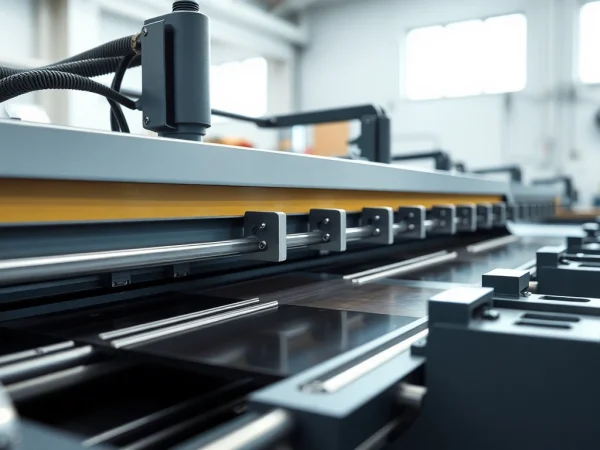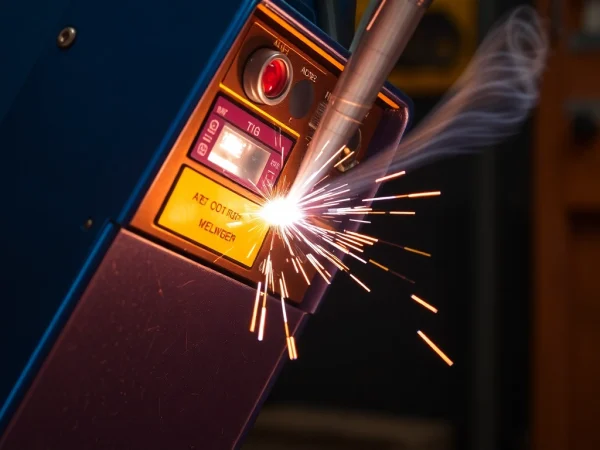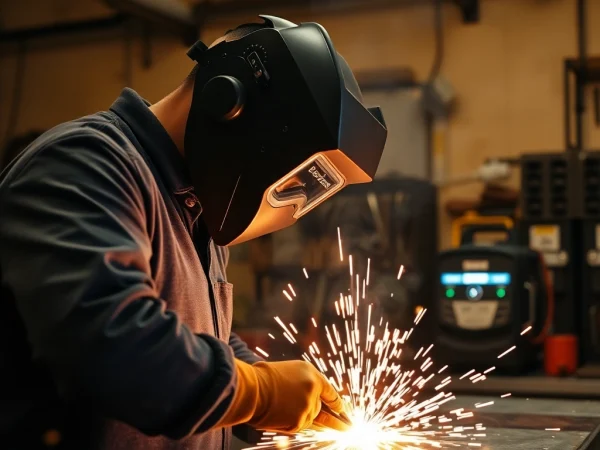Mastering the AC DC TIG Welder: Your Guide to Precision Welding
Understanding AC DC TIG Welders
What is an AC DC TIG Welder?
An ac dc tig welder is a sophisticated piece of equipment utilized in the world of welding. It operates using both alternating current (AC) and direct current (DC) to fuse metals together. The unique feature of this type of welder allows it to handle a diverse range of materials, notably aluminum and magnesium, which require AC for successful welding due to their specific electrical characteristics. Conversely, DC is often utilized for welding other metals like steel and stainless steel, providing unparalleled versatility within the same unit.
AC DC TIG welders utilize a tungsten electrode to produce a concentrated arc capable of melting the base metals and filler material. This process ensures a clean weld with minimal spatter, resulting in strong, high-quality finished products. The ability to switch between AC and DC makes these welders indispensable for both professional and hobbyist welders who aim for precision in varying applications.
Key Features and Benefits of AC DC TIG Welding
The advantages of AC DC TIG welding are manifold, contributing significantly to their popularity among welders. Here are some key features and benefits:
- Versatility: As mentioned, these welders can seamlessly switch between AC and DC, allowing for a broader range of materials to be welded.
- Precision: TIG welding is renowned for producing clean, strong welds. The controlled heat input minimizes warping and distortion, making it ideal for thin materials.
- Reduced Cleanup: The process generates minimal spatter, resulting in less post-weld cleanup compared to other welding methods.
- Best for Thin Metals: AC DC TIG welders excel in welding thin sections of metals because of their fine control over the amperage and heat.
- Clean Welds: The use of inert gas, mainly argon, prevents oxidation and contamination, producing cleaner welds with excellent aesthetics.
Applications for AC DC TIG Welders
AC DC TIG welders find their application across various industries due to their versatility:
- Aerospace: High precision is crucial in aerospace applications; hence, AC DC TIG welding is often used for fuselage structures.
- Automotive: Many automotive parts require the finesse of TIG welding, particularly for frames and bodywork.
- Fabrication Shops: Manufacturers use AC DC TIG welding for producing metal components in a range of products.
- Marine: In shipbuilding and repairs, the ability to weld aluminum and stainless steel is required, making these welders essential.
- Artistic Metalwork: Artists frequently employ TIG welding for intricate designs and artworks due to the clean results.
Choosing the Right AC DC TIG Welder
Factors to Consider When Buying
Selecting the ideal AC DC TIG welder is crucial for achieving the desired results in your welding projects. Here are factors to consider when making your choice:
- Amperage Range: Consider the amperage range suitable for the materials you will be welding. A wider range is beneficial for greater flexibility.
- Portability: If you plan to travel to different job sites, opt for a more compact and lightweight model.
- Power Source: Check whether the welder operates on single-phase or three-phase power. Your operating environment will dictate which is more suitable.
- Duty Cycle: This represents the amount of time you can weld before the machine needs to rest. A higher duty cycle means better performance for heavy-duty tasks.
- Ease of Use: Beginners should look for models with user-friendly controls, while advanced users might prefer more sophisticated features.
Top AC DC TIG Welder Recommendations
Choosing from a myriad of options available in the market may seem daunting. Here are some highly rated AC DC TIG welders worth considering, based on user reviews and performance metrics:
- Everlast PowerTIG 200DV: Known for its high reliability, this model features a dual voltage capability, making it versatile for various applications.
- PrimeWeld TIG225X: This machine is particularly popular among hobbyists for its reliability and the high frequency start, which facilitates ease of use.
- Lincoln Electric Square Wave TIG 200: Ideal for aluminum and stainless steel projects, it has an intuitive interface that is great for beginners.
- Miller Multimatic 215: A multi-process welder that can do MIG, Stick, and TIG welding, making it a versatile choice for professionals.
Budget vs. Features: Finding the Balance
When choosing an AC DC TIG welder, it’s important to strike a balance between your budget and the features that will best serve your welding needs. Here are a few points to keep in mind:
Setting a clear budget can significantly narrow down your options. However, don’t dismiss higher-end models without researching their features. They may offer enhanced durability, usability, and efficiency that justify the higher price. Additionally, many manufacturers offer financing options or discounts, which can make higher-priced equipment more accessible.
Prioritize features that align with your specific welding needs. For instance, if you predominantly weld aluminum, investing in a welder optimized for AC function might yield better results even if it comes at a higher upfront cost.
AC DC TIG Welding Techniques
Setting Up Your AC DC TIG Welder
Proper setup of your AC DC TIG welder is essential for achieving quality results. Here’s a step-by-step guide:
- Gather Tools and Safety Gear: Ensure you have all necessary tools at hand, including tungsten, a filler rod, gloves, and a welding helmet.
- Attach the Regulator: Connect the gas regulator to your argon tank, ensuring there are no leaks.
- Install the Tungsten Electrode: Chose the correct size and type of tungsten based on the material to be welded and install it in the torch.
- Set the Welding Parameters: Adjust the amperage and gas flow according to the manufacturer’s recommendations and the material thickness.
- Test Weld: Perform a test weld on scrap material to ensure settings are correct before proceeding with your actual project.
Best Practices for Weld Quality
To achieve consistently high-quality welds, consider the following best practices:
- Maintain Cleanliness: Ensure that the materials being welded are clean and free from contaminants such as oil, rust, or dirt.
- Control Heat Input: Adjust your amperage to suit the material thickness for minimized distortion and warping.
- Steady Hands: Keep a steady hand while welding to ensure a consistent bead width and overall weld quality.
- Use the Right Filler Material: Choose a filler rod that matches the composition of the base materials for optimum results.
Common Mistakes to Avoid
Understanding the common pitfalls in TIG welding can aid in avoiding mistakes that can compromise the quality of your work:
- Incorrect Electrode Size: Using a tungsten electrode that is too large or too small can lead to poor arc stability.
- Poor Gas Coverage: Insufficient argon coverage can result in oxidation and compromised weld quality.
- Inconsistent Travel Speed: Uneven movement can lead to inconsistent beads and poor penetration.
- Ignoring Safety Protocols: Always wear appropriate safety gear, including a welding helmet with the correct shade.
Maintenance and Care for AC DC TIG Welders
Routine Maintenance Checklist
Regular maintenance is essential for prolonging the lifespan of your AC DC TIG welder. Here’s a checklist to follow:
- Inspect Cables and Hoses: Check for any visible wear or damage and replace as necessary.
- Clean the Torch and Nozzle: Regularly clean to ensure a clear path for the gas and minimize contamination.
- Examine the Electrode: Replace electrodes that are excessively worn or contaminated.
- Check the Power Supply: Ensure that the welder’s power supply is functioning within the required voltage limits.
- Lubricate Moving Parts: Follow the manufacturer’s recommendations to keep components well-lubricated.
Troubleshooting Common Issues
Even with proper maintenance, issues may arise. Here are some common problems and solutions:
- Inconsistent Arc: Check the tungsten electrode; if damaged, replace it or adjust the gas flow rate.
- Poor Penetration: Increase amperage or reduce travel speed to improve penetration.
- Excessive Spatter: Ensure the workpiece is clean and adjust your gas settings accordingly.
Extending the Life of Your Welder
Extending the life of your AC DC TIG welder requires a combination of technique and care:
- Store Properly: Keep the welder in a dry, clean area to prevent corrosion and damage.
- Follow Manufacturer Guidelines: Always adhere to the recommended usage and maintenance guidelines provided by the manufacturer.
- Use Quality Consumables: Investing in high-quality tungsten, filler rod, and other consumables contributes to better results and less frequent replacement of components.
Future of AC DC TIG Welding Technology
Innovations in Welding Equipment
The field of welding technology is rapidly evolving. Recent advancements trending in the industry include:
- Digital Controls: Many modern welders are equipped with digital displays and controls, making it easier to set and monitor parameters.
- Portable Power Sources: Innovations in inverter technology have led to more powerful machines that are lighter and easier to transport.
- Advanced Cooling Systems: Enhanced cooling efficiency allows for longer weld times and reduced downtime.
Market Trends for AC DC TIG Welders
The market for AC DC TIG welders is shifting towards more efficient, user-friendly machines. There is a growing demand for welders that can adapt to different materials and applications, driving manufacturers to innovate continuously. Features such as dual voltage capabilities and multi-process functionalities are becoming increasingly standard.
The Impact of Technology on Welding Techniques
As technology advances, the techniques employed in welding continue to evolve as well. With the integration of automated systems, welders can now achieve consistent results with less human error. Furthermore, software advancements are contributing to better data collection and analysis for quality control, leading to more precise and reliable welding operations.







